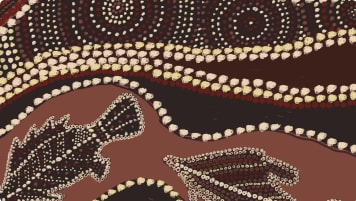Anrhem Land Songspirals
Article about the importance of songlines in travelling from place to place. Supports small group tours learning about Aboriginal culture of Australia for couples or singles mature travellers exploring outback Australia.
8 Apr 21 · 11 mins read

Arnhem Land Songspirals
Songspirals, or Songlines, form a vital part of Aboriginal Australian cultures and their practices, providing important knowledge, values, and wisdom, and connecting people to their land. As ancient narratives, they trace the journeys of ancestral spirits who created the land and all natural phenomena, and hold practical knowledge needed for survival and navigation of the land. They thus act as a map of the land, allowing travellers who memorise songs along the Songlines to know the route to their destination and travel vast distances, the backbone of the trading routes created over thousands of years across country.
But they are also much more than this, sung by Aboriginal people to awaken Country, to make and remake the life-giving connections between people and place. Country means not just land, but also the waters, the people, the winds, animals, plants, stories, songs and feelings, everything that becomes together to make up place. Songs are sung for everything, from the smallest living creature on earth to the farthest seen star, and it is through the songs that everything is brought into being and connected.
Songspirals spiral out and spiral in, go up and down, round and round, forever. They are infinite, twisting and turning in a loop, spiralling, connecting, and remaking. Through them, everything is connected, layered with beauty.
For Yolngu people from North East Arnhem Land, women and men play different roles in bringing Songspirals to life, yet the vast majority of what has been written is about men’s place in Songlines. The Gay’wu group of women in their book Songspirals: Sharing women’s wisdom of Country through Songlines have translated various Yolngu Women’s Songlines and shared some of their meanings in order to tell of Aboriginal women’s role.
This article explores three of these Songspirals – Wititj, the Settling of the Serpent; Wuymirri, the Whale; and Guwak, the Messenger Bird – beginning with an overview of the Songspirals’ custodians, the Yolngu people, and Arnhem Land. It is intended as practical knowledge for a number of Odyssey Traveller small group tours in Australia, part of a continuing series of pieces on Aboriginal art, culture, and settlement, and the ancient landscapes of Australia. Our tours are for both the mature and senior traveller, as part of a couple or as a solo traveller.

Arnhem Land & the Yolngu People
Anhem Land is a vast region in the north-east of Australia‘s Northern Territory. A vibrant stronghold of traditional culture, it is of great importance to the Aboriginal community. Maintained by the traditional owners, the Yolngu people, it is only accessible by permit for non-Indigenous Australians or overseas visitors.
Enclosed by Kakadu National Park (with the border marked by the East Alligator River) close to Jabiru, the Arafura Sea and the Gulf of Carpentaria and their often rugged coastlines, the Arnhem Land region covers over 97,000 square kilometres – roughly the size of Iceland, and bigger than Hungary, Portugal, or Austria. This vast territory of the Arnhem land region contains a variety of landforms, from sandstone escarpments (continuing the Arnhem Land Plateau from Kakadu National Park), to pristine beaches, to remote islands.
Arnhem Land has been home to Aboriginal people for at least 60,000 years, and up to 120,000 years, like it has been proven in other parts of Australia. The aboriginal community of this part of Australia‘s Northern territory have enviable archaeological and aboriginal rock art records. For example, in 2010, a piece of the world’s oldest stone axe – dated at around 35, 000 years old – was found in southern Arnhem Land.
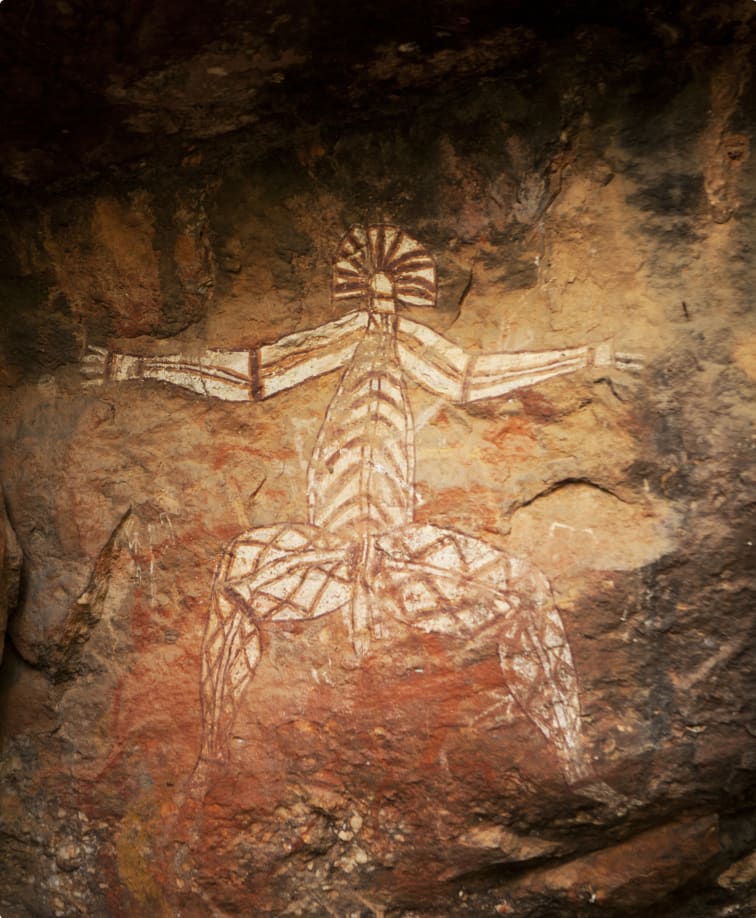
The Yolngu people constitute 12,000 out of Arnhem Land‘s total population of 16,000. The Yolngu – which simply means ‘people’ – belong to a number of clans that commonly intermarry and are closely related culturally and linguistically. The Yolngu speak over twelve different languages – with English a third (or thirteenth!) language for many Yolngu.
Like the culture of the Bininj/Mungguy, Yolngu culture is determined by a complex form of kinship . People and things – every stone, fish, river etc – are divided into two moieties, Dhuwa and Yirritja, which are in turn divided into several different groups. A Yolngu person must marry an Aboriginal person from the other group, and children take their father’s moiety.
Yolngu have thousands of Songspirals, each reaching out and connecting clans and people and Country across Arnhem Land, across northern Australia and the rest of the country through the centre and down south, and even north into the currents of the Arafura Sea and to the islands of Melanesia, Polynesia and beyond.
Songspirals are Yolngu Law: they bring the people into being and they link them to their land, to Country. The songspirals created the land a long time ago, and continue creating it, the people, and everything in Country.
Yolngu women cry the Songspirals, keen the Songspirals, in what that they call milkarri. Milkarri is an ancient song, an ancient poem, a map, a ceremony, a guide, and so much more. It is the women’s aspect of the manikay (ceremonial songs). Dhuwa men sing Dhuwa songs, and Yirritja men sing Yirritja songs, but women do Milkarri of both moieties’ songspirals. While each have their roles, it is not just about men doing their own business and women doing their theirs; it’s about women and men together.
What follows are three examples shared in the book Song Spirals by Laklak Burarrwana, Ritjilili Ganambarr, Merrkiyawuy Ganambarr-Stubbs and Banbapuy Ganambarr, and Djawundil Maymuru. They speak of their Country – Rorruwuy, Datiwuy land and Bawaka, Gumatj land – Yolngu Country in North East Arnhem Land. The songspirals’ poetic meanings have been shared for us, but their full meaning has not and cannot due to their depth and sacredness for the Yolngu.
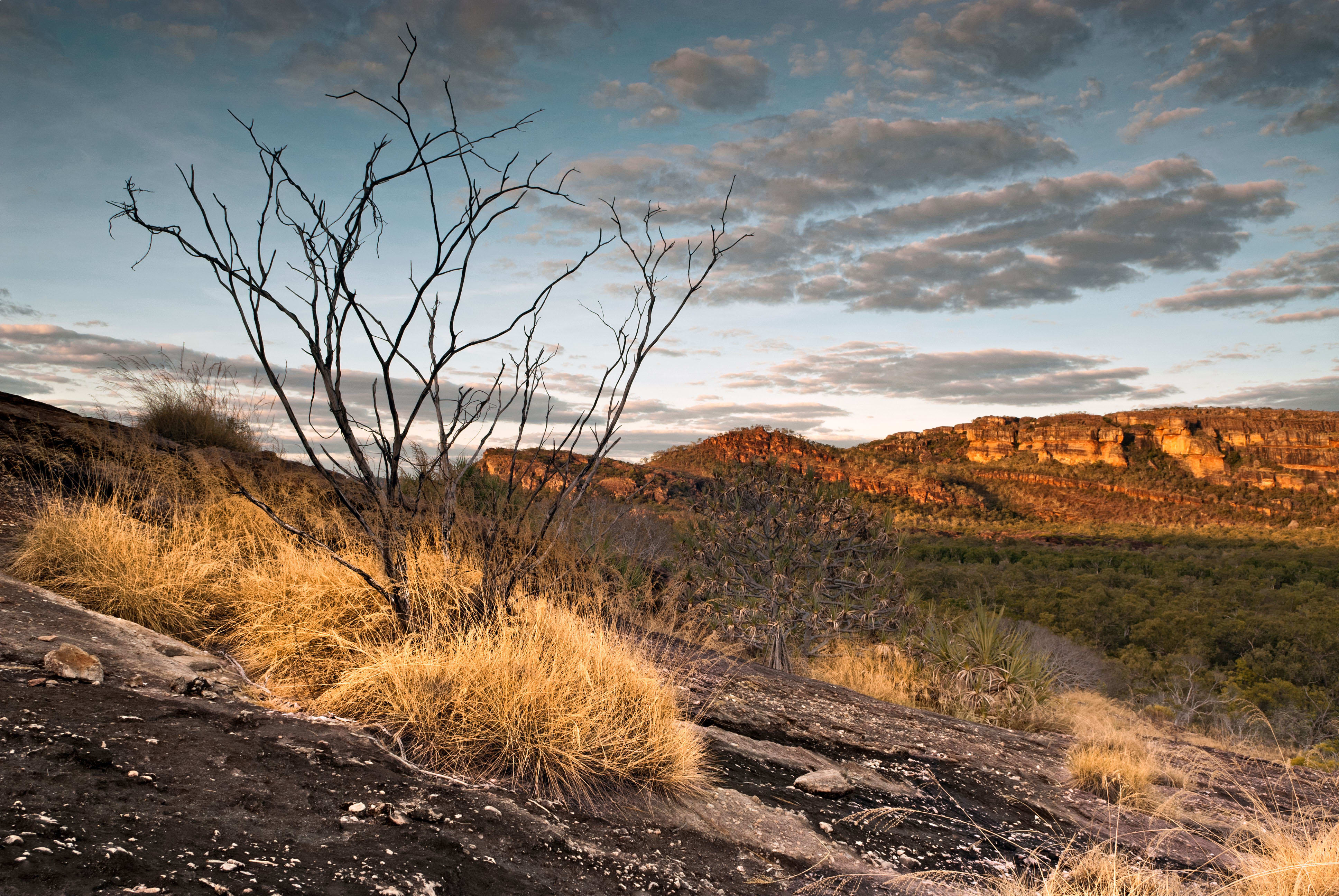
Wititj: The Settling of the Serpent
Wititj, the Rainbow Serpent – also known as Ralinymana, Nyukumana and Gunbirrnu – features heavily in Songspirals across Australia. Her travels create the land and its people as she weaves her sinuous passage throughout the country. Arnhem Land is the end place of her journey – the Settling of the Serpent.
As she travels, Wititj slithers, sways, and sashays, sensing and smelling her way, leaving her scent on the land, turning other totems away. As she moves, she clears the area with her body, makes the boundaries of the land, naming them one after another. Sensing with her tongue, Wititj uses it to cast out, spelling out the landscape, blessing the children, the clans, the Country. Everything she touches becomes sacred, claimed through her singing.
But Wititj is exhausted. It has been a long journey of singing the sacred place, of giving knowledge, of giving life to the land and to the animals, of making the boundaries. Very tired, she settles down in the gundirr, the anthills. Curled in a spiral with her weary head rested in the centre, she marks the boundary of the sacred territory she has worked so hard to create and claim.
When women keen milkarri and men sing, they sing the boundary. They sing and keen the land, cry the land, mark the land. In doing so the Songspiral sings them, gives birth to them, singing where they were born.
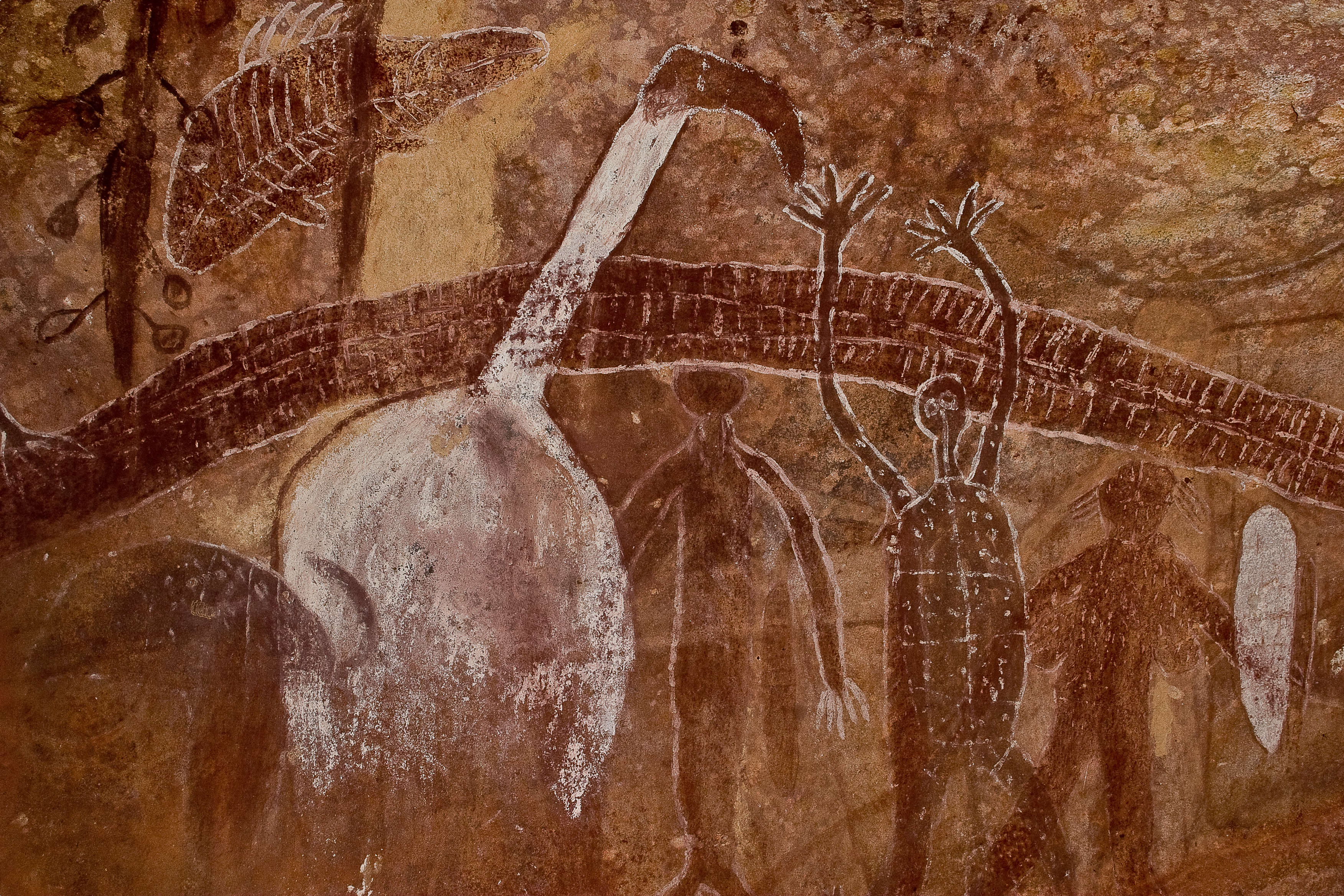
Wuymirri: The Whale Songspiral
Wuymirri is about the last journey of a person’s soul, looking back at the things the person saw in their life. It tells a story about water, whales, and the places the Yolngu see along their journey across the sea. They travel as both whales and themselves paddling on a boat, going along and singing about particular places.
Water, the sea, is part of Country for the Yolngu. They belong to the sea and the sea belongs to them, just as with the land. They make no clear distinctions between land and sea, rivers and mangroves, earth and sky; all is connected.
For Yolngu, water is never just one water. It is the tides, the currents, the muddy water and the clear, the shallow water and the deep, the salt and the fresh. When they sing of water, they sing of their deep knowledge of water, of their connection to water. They sing of the body of water as their own body, not something separate from them.
They don’t sing about water but rather they sing water itself into being. When someone sings the song, they are naming special places seen along the journey, the open sea, the beaches, rocks, trees, and islands. They enliven the places, honour them, bring them into being, remake them, again and again. When they arrive at one place, they sing toward the next, connecting them forever. It is an acknowledgement of those places, remaining always there in the Songspirals.

They sing of what the paddler sees looking back to Country, charting which way to go along the journey. The singer is with the paddler; the paddler sees it, the singer is there. It is about remembering the paddler, telling a story about who they are, about their place and their journey. The Songspirals are about a person but you can only understand that person through Country, as Country.
They sing of whales swimming with their mouths open, scooping water, filtering fish. They travel with them, part of a pod, flipping and jumping, playing and roaming, feeling the water on their skin. They dive and resurface, repressurise, and release vapour from their waterspout.

At the final destination, the water vapour forms a cloud on the horizon, a meeting of heaven and earth. Many see the cloud, including the spirits and the hunters too. The hunter knows the whale, know the signs; they push their canoe and prepare their djambati (harpoon).
Wuymuyu, the hunter, spears the whale and takes it back to the land to be cut and prepared in careful sections. The people dance, celebrate, and shout for happiness – and they share the whale with others, with other groups, for that is the Yolngu Law. This is the end of the soul’s journey, the soul being the whale. It is the end of the whale and the end of the person’s life.
Guwak: The Messenger Bird
Guwak is a Yirritja bird, known in English as a koel. It is all black and comes from a rocky mountain area of Arnhem Land called Latharra, away from the coastal area. The Guwak Songspiral talks about a person who has passed away. Guwak – the ancestral spiritual bird – and the person’s spirit journey through the sky together to the promised land, to the River of Stars, to the land that lies beyond the universe.

Guwak is the messenger that calls out and chants the names of the Yirritja places, creating them again, making them all anew. Guwak picks up songs from the land and opens the way up to the promised land, guided by the Milky Way to the spiritual world. Through her all are connected: one person to another; one clan to another; everyone to the land and the sky and to space.
The Guwak Songspiral talks about the deceased person and how that person lived. It celebrates their life, dances their life. It is full of respect, emotions, and memories that the deceased person will take away from this life.
For the deceased’s spirit to travel the pathway in the right way, the Yolngu must first negotiate. They must follow the correct protocols. In the Guwak Songspiral, they begin by singing the negotiation for the preparation and the making of the possum fur and string.
The possum fur and string embody the connections between clans, between Countries, between earth and sky. They bring the world into being and bind all. They are a passport to the universe, a passport for the person’s spirit to travel on to the afterlife.
When madirriny, the south wind, blows, it is a message from the spirits and from the ancestors to the person who has passed away announcing their passport to the stars. The sprit then waits until Guwak calls out to take them back to join the ancestors. In the quiet of the night, the call is heard that signals the start of the ceremony.
People in tree call out the call of Guwak and Guwak circles around the dead, finding the soul. The people dance with the possum string around the body. They are being Guwak, entwining her soul together with the soul of the person, circling it and wrapping it with the string. The dancers spin the threads of possum string and fur around a fig tree, the dawu tree. The children dance and roll the string and place it on the coffin, signalling that it is time to be buried.
Guwak takes the soul and cries, her call heard from far away, across the sky, through Country. She embarks on a circular journey, circling the land and binding the people together. The Songspiral goes to other clans, who pass it on until the day breaks. The clans share the ancestry of Guwak, but each sing the song in their own way. In this way Guwak spirals, passes onwards, round and round.

Guwak calls when the spirit arrives at its destination in the River of Stars. This is the end of the spiral. Guwak sees a big tree called Marawilli, standing there with branches like arms welcoming Guwak and the person’s spirit. The tree represents all the Yittitja and Dhuwa clans, binding and uniting them together underneath its shade.
The story is told to understand that spirits are up there in the sky and so it must be cared for. Guwak is another way to tell people to look after the universe, everything within it and beyond.
Tour of Arnhem Land and Aboriginal Culture
Odyssey Traveller will visit Arnhem Land as part of our tour of Kakadu and Darwin, one of our many brand new outback and Australia tours. Beginning and ending in Darwin, our tour is designed for mature and senior travellers who are eager to learn as they travel. We go beyond the highlights of your typical Kakadu day tour, spending six nights in lodge accommodation in Jabiru, so that you can make the most of your trip to Australia‘s largest national park.
Kakadu National Park is a place of incredible ecological diversity, ranging from the rugged escarpments of ‘stone country’, to monsoon forest, to the RAMSAR-listed wetlands and tidal flats. Our Kakadu tours take in the park‘s most spectacular scenery, from the stunning waterfalls of the Gunlom Plunge Pool and Waterfall Creek, to seeing native wildlife on a Yellow Water Cruise of the Yellow Water Billabong – including magpie geese and saltwater crocodiles in their natural habitat! We also take the time to learn about the indigenous culture of the park, seeing ancient Aboriginal rock art and archaeological sites at Ubirr Rock and Nourlangie Rock.
Our tour of the Northern Australia goes beyond Kakadu. On our way along the Arnhem Highway, we make a detour to the Fogg River Conservation Reserve in the Mary River Wetlands, while we make a side trip to Litchfield National Park on our way up the Stuart Highway. Our Litchfield tour takes in the pristine water of Buley Rockhole, one of the Northern Territory‘s most popular swimming holes, and visits the striking termite mounds that dot the park.

Travellers with an interest in learning more about the Aboriginal heritage of Australia may want to check out our various outback Australia tours.
These include visits to:
- The ancient indigenous sites including Lake Mungo and the Budj Bim Cultural Landscape as part of our tour of the Southern States of Australia;
- The important cultural site of Wilpena Pound on our tour of the Flinders Ranges;
- The ancient rock art in the Kimberley, Western Australia;
- The Brewarrina Fish Traps in outback Queensland;
- Uluru and Kata Tjuta in the Northern territory.
Every Odyssey guided tour is designed especially for mature and senior travellers, who want an authentic and informed experience of their destinations. Our tours aren’t the typical tourism Australia holiday – Blue Mountains, the Great Barrier Reef, and the penguin parade on Port Phillip Island. Instead, we pride ourselves on getting of the beaten path and making you think about Australia and New Zealand in new ways. We move in genuinely small groups – usually 6-12 per tour – and all tours are cost-inclusive, encompassing accommodation, attraction entries, and transport. For more information, click here, and head to this page to make a booking.
Articles about Australia published by Odyssey Traveller:
- Learn About Songlines
- Uncovering the Ancient History of Aboriginal Australia
- Aboriginal History and Culture of Kakadu National Park
- Aboriginal Land Use in the Mallee
- Understanding Aboriginal Aquaculture
- Aboriginal Art
External articles to assist you on your visit to Australia:
Related Tours

days
Jun, Jul, Sep, Feb, Mar +1Darwin and Kakadu small group tour
Visiting Northern Territory
Explore and learn as part of a small group tour for seniors on this package tour to Darwin and Kakadu National park, a UNESCO world heritage site. This program also visits Arnhem land. Our focus is on ecology, landscapes and history on this 14 day program in the far north of the Northern Territory.

days
Mar, May, Aug, Sep, Oct +2Small group tour of World Heritage sites and more in the Southern States of Australia
Visiting New South Wales, South Australia
Discover the World Heritage Sites of the southern states of Australia travelling in a small group tour. A journey of learning around the southern edges of the Murray Darling basin and up to the upper southern part of this complex river basin north of Mildura. We start and end in Adelaide, stopping in Broken Hill, Mungo National Park and other significant locations.

days
Feb, Mar, May, Jul, Sep +2Guided small group motorcycle tour of World Heritage sites in Victoria and South Australia
Visiting
Discover the World Heritage Sites of the southern states of Australia travelling in a small group tour of like minded motorcyclists. A journey of learning around the southern edges of the Murray Darling basin and up to the upper southern part of this complex river basin north of Mildura. We start and end in Adelaide, stopping in Broken Hill, Mungo National Park and other significant locations.
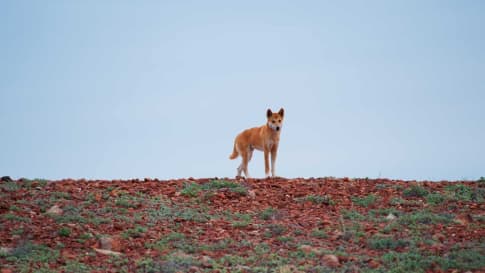
days
Apr, May, Jul, Aug, Oct +2Small group tour of Australia's Flinders ranges
Visiting South Australia
Escorted small group tour of the Flinders range in South Australia from Adelaide. Learn about Coober Pedy, Wilpena pound and water system of Lake Eyre as we explore and learn also about the history of the people who explored the Flinders.

13 days
May, Jun, Jul, Aug, SepSmall group tour of Australia's Kimberley
Visiting Western Australia
Escorted small group tour of the Kimberley. We explore and visit The Bungles, Bell Gorge, Mitchell plateau & Halls Creek in the dry season. Amazing landscapes intertwined with Aboriginal communities resident more than 45,000 years.
From A$15,390 AUD
View Tour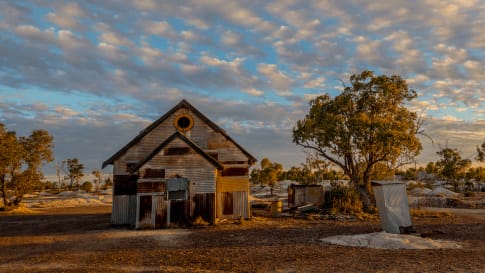
days
Mar, Apr, May, Jul, Aug +2Small group tour of outback Queensland
Visiting New South Wales, Queensland
To Dubbo and back, this small group tour takes you to learn about the Brewarrina fish traps, we travel high up into North Queensland to see the Dinosaurs of Winton and incredible Aboriginal rock art at Cathedral gorge and learn about opal mining and the history of Lightning ridge.

days
Apr, Jun, Aug, Nov, Mar +2Exploring Alice Springs and Uluru-Kata Tjuta National park by Motorbike
Visiting
Explore on a Motorbike tour in the Outback and learn about historic Alice Springs, The MacDonnell ranges, and Uluru-Kata Tjuta national park. This escorted small group Motorbike tour for mature and senior travellers, travelling as a couple or solo travellers also visits the Hermannsburg Lutheran mission plus Henbury meteorite site learning about the Aboriginal outback and contemporary art.
Articles

Aboriginal Art
Senior and mature couples and solo travellers remain curious but often informed about the role Aboriginal art plays in the indigenous community and the various styles. This article seeks to provide a platform for this collection of small group tours of upto 15 people into the Australian outback where often Aboriginal art styles are encountered.

Aboriginal history and culture of Kakadu National Park, Northern Territory
For those seek to learn as they travel then the history of the Aboriginal journey and timelines that unfold as a discovery in Australia seek to fascinate the mature and senior traveller on a small group package tour for couples and singles. From Darwin, this tour also visits Arnhem land as well as Kakadu, during the dry season.
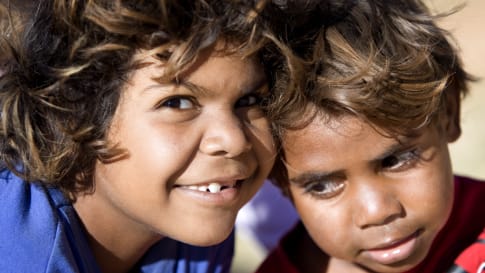
Aboriginal Kinship systems
Article about Aboriginal kinship to assist small group tours in Australia understanding Ancient aboriginal society and the contemporary view. Kinship influences the relationships including aboriginal trading routes.

Aboriginal Songlines
Songlines trace the journeys of ancestral spirits who created the land and all natural phenomena. The creation stories as well as practical knowledge needed for survival in outback Australia. We experience this knowledge on our small group tours into Outback Australia.
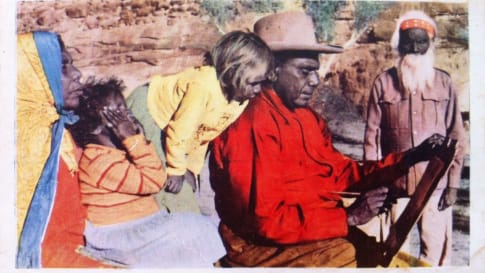
Albert Namatjira, Painter
These small group tours for senior couples and solo travellers seek to explore history, culture and the landscapes of the Australian outback. Albert Namatjira is certainly the most famous Indigenous Australian of his generation, regarded widely as one of the country’s all-time great artists, based in the West Macdonnell ranges, influenced by the Hermannsburg mission.
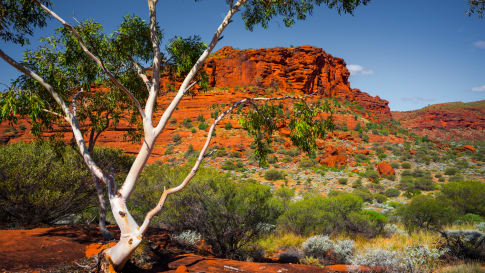
Alice Springs, Australia
Explore the sights and history of Alice Springs, with its amazing Indigenous art, rugged early settlement, and dramatic natural landscapes, Alice Springs is one of the Northern Territory's most popular highlights. Odyssey offers small group tours for mature and senior travellers, couples, and solo travelers to Australia and the Northern Territory.

Ancient Aboriginal trade routes of Australia
Ancient Aboriginal trade routes of Australia Trade was a central part of life for Aboriginal people prior to the British settlement of Australia. Trading routes criss-crossed the nation, dispersing goods, information, technologies and culture thousands…
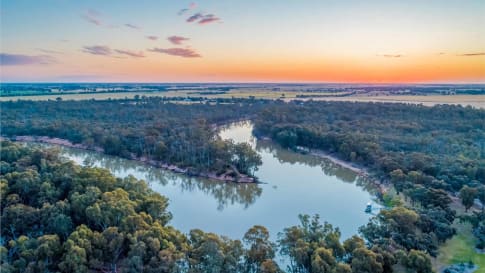
Appreciating Australian River Systems
Appreciating the linking of the river network into the Australian, history, culture and landscape on a small group tour for mature and senior travellers of couples or solo travellers is an integral part of understanding the continent of Australia and Aboriginal settlement.
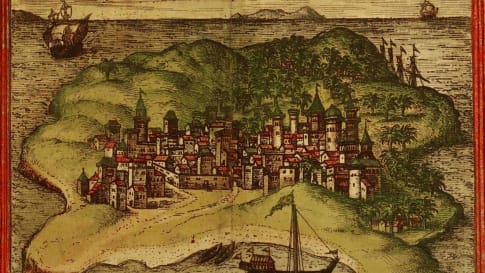
Archaeological mysteries of Australia: How did a 12th century African coin reach Arnhem Land?
Consider the impact of Portuguese, Spanish and Chinese followed by the Dutch trading in the Spice islands to the North of Australia from the 11th century. The probability of African coins reaching a beach become real. Learn more on a small group package tour to Kakadu and Arnhem land or the Kimberley where shipwrecks have been found to consider the impact on Aboriginal history and rock art. Tours for seniors couples and singles.
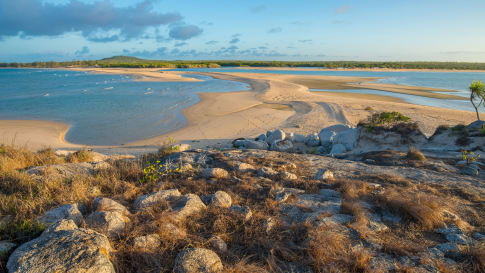
Arnhem Land, Northern Territory
To enter Arnhem land a permit is required for visitors. Explore and learn about the Aboriginal community in Arnhem land as part of a small group package tour that includes Darwin and the Kakadu. These are small group tours of upto 12 like minded mature and senior travellers, couples or solo travellers interested in exploring as they tour.

Contemporary Aboriginal Paintings
Article introducing contemporary aboriginal art to mature and senior travellers taken a escorted small group tour into Outback Australia's Northern Territory, Kimberley, Queensland, New South Wales or South Australia seeking to learn about Aboriginal history and culture.
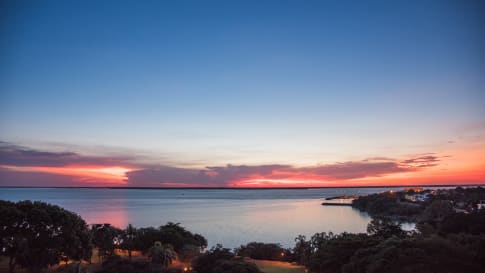
Darwin, Northern Territory
Discover Australia's Northern city whilst on a small group package tour to the Northern Territory with likeminded mature and senior travellers couples or singles. Darwin is the base for a tour of Kakadu and Arnhem land.
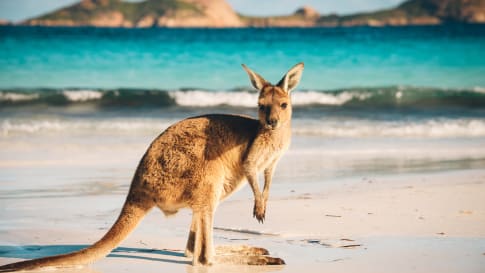
Iconic Animals of the Australian Outback
Explore the wildlife and natural heritage of Australia, with its iconic marsupials, birds, reptiles, and surreal monotremes in the Outback. Odyssey offers small group tours for mature and senior travellers, couples, and solo travelers to Australia.

Madjedbebe Archaeological Site, Northern Territory
Madjedbebe Archaeological Site, Northern Territory Near the border of western Arnhem Land and Kakadu National Park in Australia’s ‘top end’, Madjedbebe rock shelter (formerly known as Malakunanja II) is the oldest archaeological site in Australia,…
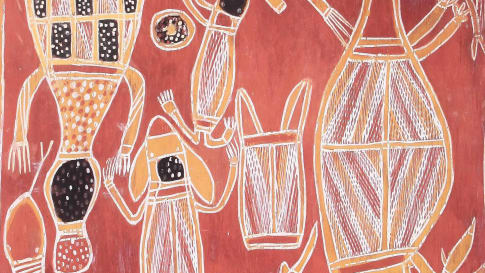
Milingimbi Art
Milingimbi art, studied and discussed on a small group tour for mature and senior travellers interested in history and art. Milingimbi is one of a number of different acclaimed art styles of the Aboriginal community history.

Natural landscapes of Kakadu National Park, Northern Territory
Article about a unique RAMSAR landscape and UNESCO world heritage site explored and part of a small group tour for mature and senior travellers couples and singles based in Darwin. Landscape, wildlife, and aboriginal history and settlement plus African mystery are part of this and other articles on Kakadu.

Religious Beliefs of the Arrernte: Traditional Spirituality and Catholicism
Article supporting small group tour for senior couples and solo travellers of central Australia. For the Arrernte, their language goes to the core of who they are, including their cultural identity, their belief systems and their social order. Speakers do not just share the Arrernte group of languages but also an understanding of the way the world is organised and how it came to be that way. This all encompassing and enduring world view is known as Altyerre: the creation of the world and the things in it, and its external existence (often termed “The Dreaming” in English).

The Arrival of Aboriginal Australians on the Continent
Tracing Aboriginal history via an outback small group tour for mature and senior couples or solo travellers provides an intriguing learning platform about Australia, rock art, trading and culture that traces a history possibly some 120,000 years ago.
